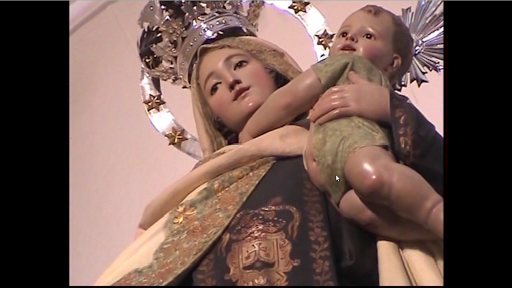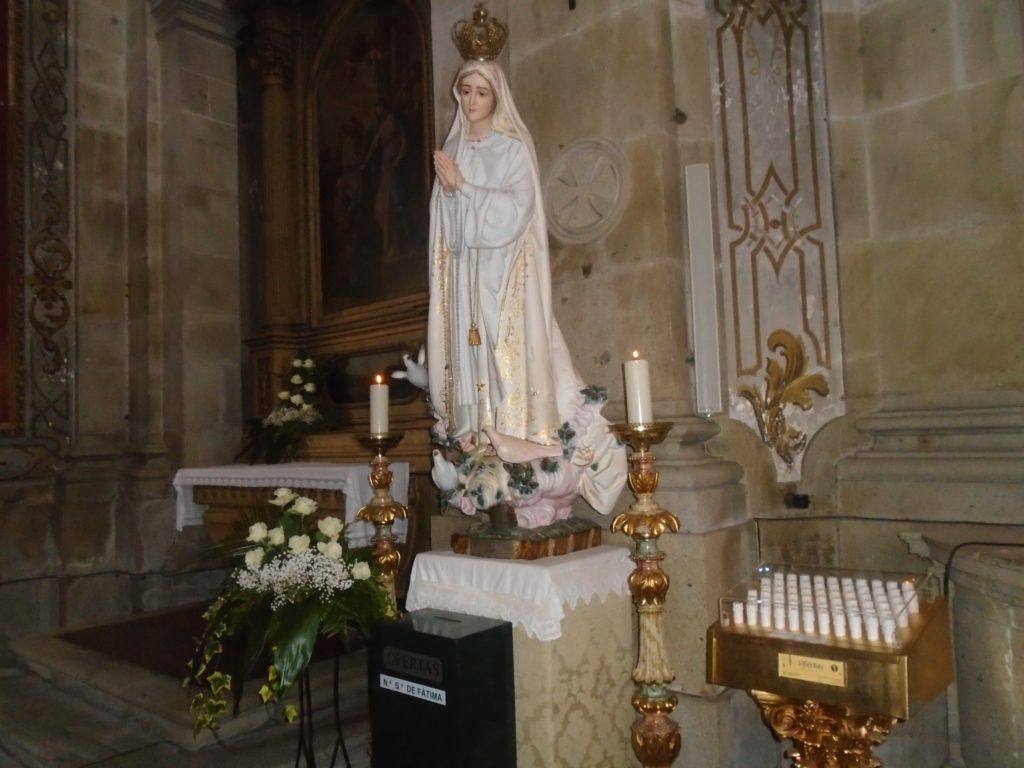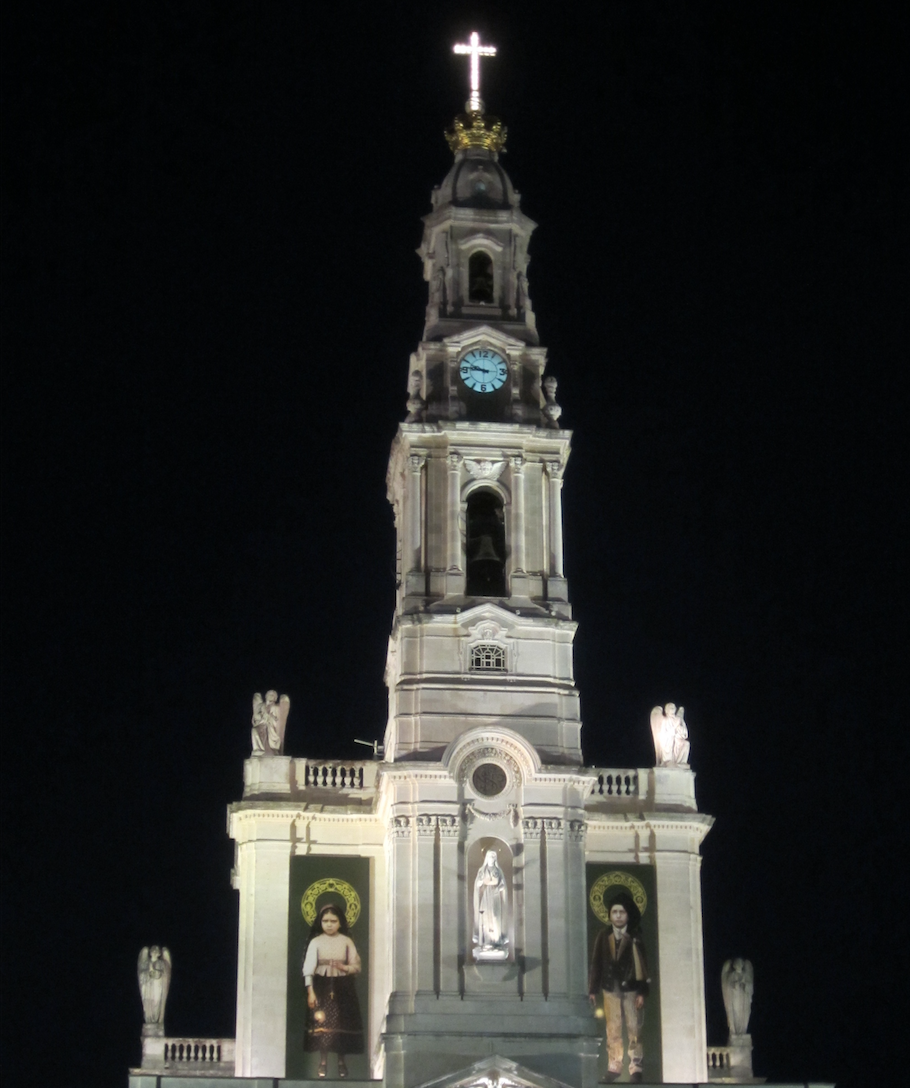REPOST FROM JULY 2017
On October 13th, Our Lady displayed the miracle of the sun, as she had foretold. During the last apparition that took place after that miracle, Our Lady showed herself as Our Lady of Mount Carmel, as representative of the glorious mysteries of the rosary. The apparition had a tremendous impact on the 70,000 people who saw it, many of whom were reporters.
As for the historical context, at that time, atheism was thriving in Portugal, freemasonry had a strong hold on the government, and the people in the government thought that they were going to wipe out religion from Portugal for good, despite the fact that Portugal had a long history of being thoroughly Marian – their kings and queens had consecrated their land to Mary for centuries. These modern atheistic politicians thought that they were going to stamp out religion once and for all, hoping that Lisbon would be the second Moscow.
Mary’s greatest revelation took place at the same time of the Bolshevik Revolution, when Communism was just about to spread. There was the threat of nuclear war, as well as the threat of a totalitarian political system spreading; it did spread, throughout the world. Worst than that, it was a form of government that was anti-religion; it was anti-God.
Communism is an atheism of the will, in contrast to Darwin, who preceded Stalin, which was an atheism of the intellect. Darwinism tries to redefine the origins of humanity on rational terms, according to a particular scientific approach of the origin of the human species. And it ultimately breeds an atheism of the intellect, built on the belief that we can identify where we come from apart from any reference to God, solely based on reason and what we know of life in this world. Marx’s philosophy, however, was an atheism of the will, a deliberate and militant approach to combating religion, as being an obstacle to progress in society, a cause of war and division.
Marxism was being enforced as a political system and wedded to a government. Therefore, it was no longer legal to practice faith freely; people were unable to have bibles, to wear a crucifix around the neck, or go to church publically. The government had legislated churches, but they had control over them, and over what was said. There was a great deal of oppression that was based on a philosophy that was essentially opposed to God.
Mary saw all of this taking place from heaven. And as the first and most important missionary of God, in union with the Lord and in her will united to God’s will, she saw this danger on the rise, and chose to intervene and send a wake-up call to humanity as an echo of the gospel. Fatima is a call to faithfulness, for first of all, the believers.
Mary is the first person to have faith in God’s promise of her Son, as Savior. At the Annunciation, when she said ‘yes’ to God’s will that she would be the mother of the Messiah, she was the first to believe in the Messiah, as it was directly communicated to her by the Archangel, Gabriel.
The first to believe became the most important of all believers. As the first Missionary, she didn’t just receive that gift and keep it to herself. Right away, she went out of herself to share it with others. Even in heaven, after the drama of all that had unfolded in redemption, from the wood of the crib to the wood of the cross, to Pentecost and ultimately the Coronation, Mary was integrally interwoven with all the important events of salvation from the life of Our Lord. She was there, participating fully, in the most important events of Jesus’ life. Whether physically and immediately present, as at the foot of the cross, or in the manger, or amidst the apostles during Pentecost, or whether from a distance, participating spiritually, as in Jesus’ ministry, one way or another she was always there.
In the disposition of the handmaid of the Lord in the service of her son, and as the spouse of the Spirit and the daughter of the Father, she was there. And she continues to be there. She continues to be a mother who is in love with her children and who has a profound love for them. She cannot keep silent in the face of her children being in danger. When she sees her children in danger, she has to speak out, and she does.
Fatima is one of the most prophetic Marian apparitions, one of the most timely, and relevant for our day and age. From Pius the XIIth to most recently Pope Francis, and everyone in between, especially Saint John Paul II, with the assassination attempt on his life on May 13th, the day commemorating Our Lady’s first apparition, all of the popes of the past century have said how important the message of Fatima is to us still today. Pope Benedict XVIth and Saint John Paul II said that the message is even more applicable than it was in 1917.
What happened back then? On May 13 until October 13, 1917, our Blessed Mother appeared. Historically, this was right after the first World War and before the second World War, the most horrific wars in recorded history. Mary prophesied that if men did not repent and convert, there would be a far worst war than the first. And certainly, the events of the Holocaust and WWII were worst than those in the first World War.
In the horizon, she saw a possibility, that if people did not seriously change, something catastrophic would happen, just as God told the people of Nineveh through Jonah. Through the preaching of Jonah, the people of Nineveh did change and nothing happened, because there was a change of life, and therefore, a change of outcome. The accumulated consequences and the worsening sins of the people of Nineveh, didn’t catch up with them. At Fatima, Our Lady wanted to reach out to her children as loving Mother.



